2025 :: a banner year
It’s November 2025. Time to relax and do some writing after a “BANNER” summer of outdoor gardening in 2025. Some of the veggies I’ve always grown did better than ever, one new experiment did wonderfully, another not so great, but that’s what experimenting is all about, right?
Here’s a few highlights of a few differences this year.
CLICK ON THE TITLES OR PHOTOS TO READ MORE!
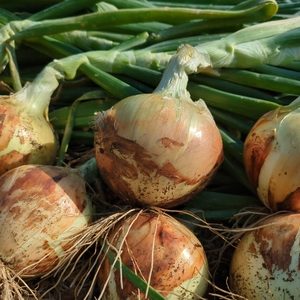
ONIONS & SHALLOTS
This year our onions grew the best ever. 83 pounds of beautiful onions were harvested in September. The main thing I did differently for them is that I did not cover them with shade cloth as I’ve always done here before, and it proved to be the right thing to do. Read more…

SUNCHOKES
aka "JERUSALEM ARTICHOKES". Our first-time trial growing sunchokes was a huge success! The harvest of just one plant produced just under 5 lbs, so with another 8 plants yet to harvest, we may bring in another 40 lbs. I’m learning to cook them in various ways and they are delicious.
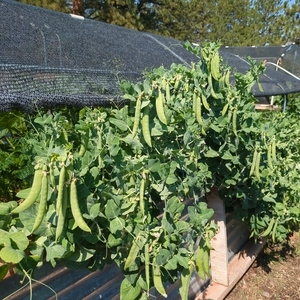
PEAS
The peas did as well as they always do, but this year I left them to grow after the first harvest. Usually I cut them back when they’re “done”, but this year I let a couple rows of Maestros continue for a second harvest which produced an additional 1.5 lbs after the first 4.5 lbs. I didn’t need the space for anything else, so why not?
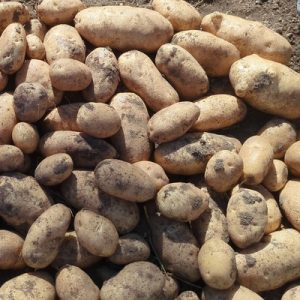
POTATOES
The only thing I did differently with potatoes was that I added some kelp meal at planting, then fertilized a couple of times during the summer with liquid kelp. I assume it helped.. We harvested 170 lbs of nice potatoes from 61 plants started, 5 varieties. That was an average of 2.8 lbs per plant. The largest potato was a Yukon Gold, weighing in at 27.8 oz.
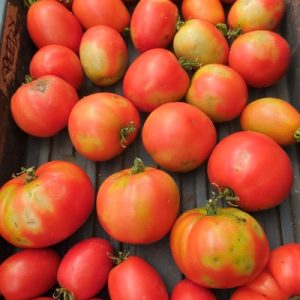
TOMATOES
Normally I grow all my tomatoes in the greenhouse, as the early summer and late summer temps are pretty cool for tomatoes, and they seldom have enough time to ripen. After some success last year with two tomato plants in our warmest outdoor bed right in front of the greenhouse, this year I planted six tomato plants in the same area. Partly due to a whitefly infestation, very few ripened before the freezing overnight temps began in September, and were blotchy, as seen. They ripened, but were mushy and flavorless. The main reason I believe it took them longer to ripen was because of the whitefly infestation I had to deal with.
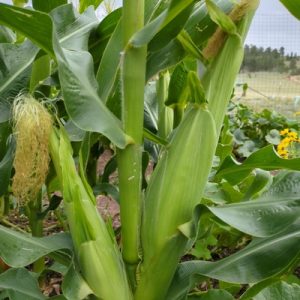
CORN
Crazy me, I decided to give corn one more try after a lack of success in our first year gardening here (2017). Knowing that “every year is different” I thought this just might be a good one. Now that we have an additional growing space where height is not an issue, I tried a couple beds of “three sisters”, with corn, beans & squash. Our summer season was just a couple of week shy of enough before the freezing nights stopped the corn growth. We ate a couple of somewhat edible ears, but the rest went to the compost heap. Nice try.
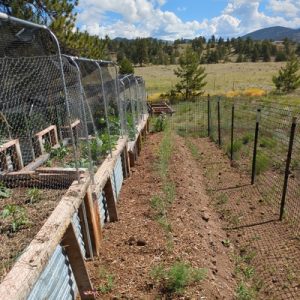
ASPARAGUS
Our asparagus took a year off. We dug all the asparagus out of the bed it had been in since 2017, in the main garden area. It was transplanted to a new bed just outside the main garden, fenced in to keep the deer out. This year it was allowed to get established in that spot, and perhaps next year (2026) we’ll harvest just a little of it, allowing it to continue its growth.
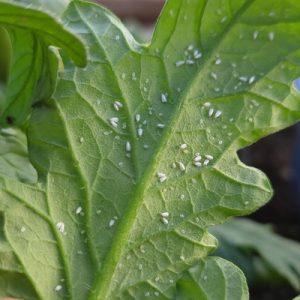
WHITEFLIES
I hate to add this as a “highlight” but it was. This year we had a terrible time with whiteflies, primarily in the greenhouse but spreading out to the entire garden. I just couldn’t control them. They did the most damage to the tomatoes, both in & outside. Even though they didn’t seem to limit the production of squash or beans, they were able to accumulate on these plants and multiply outdoors. And multiply they did!
OTHER 2025 VEGGIES
In addition to the veggies highlighted here, we grew many other veggies that all did very well this year… arugula, beans, beets, bok choy, broccoli, cabbage, carrots, cauliflower, celery, cucumbers, garlic, herbs (basil, cilantro, oregano, parsley, rosemary, thyme), kale, kohlrabi, lettuces, jalapenos, leeks, parsnips, rhubarb, rutabagas, spinach, winter squash & zucchini, along with a few beneficial flowers. I have to say I think that’s pretty impressive here in this challenging climate. As winter gets in gear I’ll update all these veggies and their links on WHAT WE GROW AT 9,000’
As a side note, this year we joined the air fryer enthusiasts with the purchase of an air fryer, and I’m having lots of fun cooking lots of different veggies in the air fryer, along with the outdoor grill, the Instant Pot and all the other traditional methods of cooking vegetables! We also continue to freeze-dry many of the vegetables, either individually or cooked into dishes with other ingredients prior to freeze-drying.

